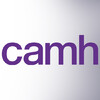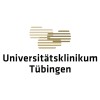
Bilateral Repetitive Transcranial Magnetic Stimulation for Auditory Hallucinations Results
SchizophreniaThe primary purpose of this study was to conduct fMRI neuroimaging studies prior to and subsequent to the rTMS intervention. The intent was to ascertain changes in regional brain activation and connectivity that most robustly predict level of improvement in auditory hallucinations elicited by bilateral rTMS as assessed by the primary outcome variables.

Symptom Based Treatment Affects Brain Plasticity - the Role of Verbal Auditory Hallucinations
HallucinationsVerbal AuditoryThe aim of the study is the examination of brain plasticity on verbal auditory hallucinations (AVH) after neuromodulation with fMRI (functional magnetic resonance imaging) neurofeedback. During the training of fMRI neurofeedback subjects are trained to regulate consciously the connectivity of areas which are associated with hallucinations.The aim is to improve perceived hallucinations' intensity in everyday life of the patients as well as investigating the impact of neurofeedback on resting-state networks in the brain. As control groups, control subjects without AVH and participants with AVH, but no psychiatric diagnosis will be included.

Transcranial Brain Stimulation and Its Underlying Neural Mechanisms as a Novel Treatment for Auditory...
Psychotic DisordersThe present study aims to investigate whether transcranial direct current stimulation (tDCS) reduces auditory hallucinations in patients with psychosis. In addition, the neuronal changes of tDCS will be examined.

Targeting Auditory Hallucinations With Alternating Current Stimulation
SchizophreniaSchizo Affective DisorderInvestigating the effects of non-invasive transcranial alternating current stimulation (tACS) as a treatment for auditory hallucinations in patients with schizophrenia.

Behavioral and Cognitive Therapies for Auditory Hallucination Management
Chronic PsychosisThe present study wants to evaluate the efficacy of a short psychoeducational type group intervention and Cognitive behavioral therapy (CBT) 3rd wave on the severity of hallucinatory Acoustico-Verbal (HAV) symptomatology in patients with schizophrenia.

Transcranial Direct-current Stimulation (tDCS) in Treatment Refractory Auditory Hallucinations
Auditory HallucinationSchizophreniaThis is a 4 week therapeutic pilot study with a 4 week follow-up period involving inpatients with treatment resistant DSM-IV schizophrenia or schizoaffective disorder diagnosis. Each eligible subject will receive either 20 minutes of active tDCS (transcranial direct-current stimulation) or sham stimulation twice a day on 5 consecutive weekdays for 4 weeks with a 4 week follow-up period.

RELATE - Efficacy and Feasibility of a Cognitive Behavioural Module for Distressing Auditory Verbal...
Verbal Auditory HallucinationPsychotic Disorders2 moreAuditory hallucinations (AH) are associated with distress and reduced functioning. Psychological interventions show some promising effects on psychopathology but have been less successful in reducing AH related distress, which patients report to be a priority. Research suggests that distress is associated with the hearer relating to AH in a passive and subordinate manner. A novel approach thus teaches assertive responses to AH through the use of experiential role-plays. A single centre pilot study in the United Kingdom evidenced a large effect of this approach on AH distress but independent multicentre studies are required to ascertain effectiveness across different settings. The planned feasibility trial aims to estimate the expected effect for a subsequent fully powered prospective, randomized, controlled, parallel-group, two-armed, multicentre, open trial set up to demonstrate that adding a Relating Module (RM) to Treatment as Usual (TAU) is superior to TAU alone. Feasibility questions relate to patient recruitment, therapist training and therapy monitoring in different types of psychological and psychiatric outpatient facilities.

High Frequency Repetitive Transcranial Magnetic Stimulation (rTMS) in Schizophrenia : a Randomized...
Auditory Hallucinations in Patients With Schizophrenic DisordersBackground: Repetitive transcranial magnetic stimulation (rTMS) is a recent therapeutic which has demonstrated its efficacy in the treatment of auditory hallucinations in patients with schizophrenic disorders. Up to now, the target of stimulation has been over the left temporoparietal region (based on the international 10-20 EEG system) and rTMS has been delivered at low frequency (1 Hz). High frequency (20 Hz) might allow shortening the duration of treatment and so could be more convenient for the patient (2 days at high frequency instead of 15 days at low frequency). Besides high frequency, an accurate target taking into account the inter-subjects anatomical variability might increase the efficacy. Based on a great overlap of language and auditory hallucinations networks, the investigators hypothesized that targeting the stimulation on the highest cluster of activation induced by a language task could be an easier and relevant method to determine the target. The investigators suggest that the best area is located at the posterior part of the left superior temporal sulcus (STS). Indeed, this area is considered as an " epicenter " of language, i.e., involved both in understanding and production of language and in the auditory hallucination network. Therefore, the investigators conducted an open pilot study in order to test the interest of rTMS at high frequency (20 Hz) associated with anatomical and functional magnetic resonance imaging (MRI) and neuronavigation in 11 schizophrenic patients with hallucinations. The investigators showed a significant reduction of auditory hallucinations; Seven out of 11 patients (63.8%) were considered as responders at day 12 with a decrease of more than 30% of the score of Hoffman's scale (Auditory Hallucinations Rating Scale) ; 2 patients presented a drastic improvement with no hallucinations after 12 days of rTMS. The investigators also showed the target based on anatomical and functional MRI was located at the intersection of the left STS and the coronal slice across the vertical line of sylvius sulcus. The aim of this multicentric double-blind study (randomized and placebo sham) is to demonstrate the efficacy of rTMS at high frequency with neuronavigation in the treatment of auditory hallucinations in patients with schizophrenia and schizo-affective disorders (DSMIV-R). Methods: 72 subjects will be included after written consent. After randomization, the subject will receive in a double blind either active treatment or placebo (sham coil) treatment. rTMS : 4 sessions of 13 minutes, with 2 sessions a day, at 20Hz frequency and at an intensity of 80% of rest motor threshold will be delivered. These parameters allow the investigators to be under the risk of epilepsia, the only one severe side effect. Another mild side effect is headache easily treated by antalgic drugs. The target will be established with anatomical MRI eventually associated with functional MRI before treatment. The efficacy of treatment will be evaluated over 4 weeks (D0, D1, D2, D7, D14, D21 and D30). The primary assessment is the percentage of patients who present a decrease of more than 30% of the frequency item of Auditory Hallucinations Rating Scale (AHRS) between D1 and D30 at 2 evaluations spaced of 1 week (Responder patients). The secondary assessments are : 1- Relative decrease of frequency item of AHRS between D1 and D14 ; 2- Evolution of total score of AHRS at D1, D2, D7, D14, D21 and D30 ; 3- Variation of scores of CGI, SUMD, IS, positive, negative, general and total PANSS scores between D0 and D14 and D30 ; 4- Scores at secondary side effects (adapted UKU) at D2 and D7; 5- Distances between the present target and the classical target based on 10-20 EEG system (T3P3) and/or the target established with functional MRI (cluster of activations induced by a listening comprehension task).

Repetitive Transcranial Magnetic Stimulation for Refractory Auditory Hallucinations in Schizophrenia...
Refractory SchizophreniaStudies using repetitive transcranial magnetic stimulation (rTMS) as a treatment for refractory auditory hallucinations (AH) in schizophrenia have shown promise. The majority of studies have examined the effect of low frequency left-sided stimulation (LFL) (i.e., 1 Hz) to the temporal parietal cortex (TPC). Priming stimulation (6 Hz) prior to LFL stimulation (hereby simply referred to as priming) has been shown to enhance the neurophysiological effects of LFL rTMS alone and, as such, may lead to greater attenuation of AH. Therefore, this study evaluated the efficacy of priming rTMS and LFL rTMS, compared to sham, applied to the TPC in patients with schizophrenia experiencing refractory auditory hallucinations (AH).

Efficacy and Safety of Bilateral Theta Burst Stimulation for the Treatment of Auditory Hallucinations...
Auditory HallucinationsFirst clinical studies indicate an effect of repetitive transcranial magnetic stimulation(rTMS) in the treatment of auditory hallucinations (AH). However, effect size, optimal stimulation site and parameters are unclear. With this randomized, placebo-controlled clinical trial we test the efficacy and safety of bilateral continuous theta burst stimulation (cTBS), a patterned form rTMS, against auditory hallucinations. The treatment will be applied add-on to individual antipsychotic and behavioral therapy. Patients will be treated for 6 weeks each weekday (30 sessions) with 40s of cTBS (halfway between T3/P3 and T4/P4). For weeks 1-3, half of the subjects will be randomized to a sham-stimulation (coil tilted 45°). During weeks 4-6, all subjects receive real cTBS.
